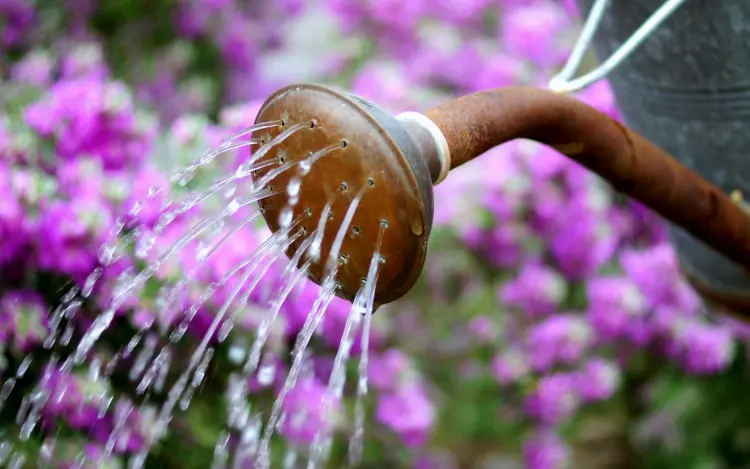As soon as fall approaches, pots of brightly colored chrysanthemums appear in florists’ shops everywhere. Sometimes people buy them as a bouquet, then throw them away when they fade. But this, fortunately, is not the only option. In fact, chrysanthemums in pots can successfully adorn a windowsill for years. Another option is to transplant mums into the garden when spring arrives. Growing them is certainly not an easy task, and timely care is the key to success! But these plants are worth every effort for the beauty they give us! Today, we’ll show you how to properly care for chrysanthemums!
How to care for chrysanthemums?
Chrysanthemums are one of the largest genera among herbaceous perennials and semi-shrubs. Whether they are grown as annuals or perennials, in pots, or in soil, chrysanthemums are one of the most preferred plants to grow at home. Their foliage varies – whether their leaves are large or small. Their flowers form a standard basket-shaped inflorescence. Chrysanthemums are easily recognizable and always look unique. Chrysanthemum flowering begins when daylight hours decrease to 9-10 hours. This, of course, happens in fall – it is because chrysanthemum flowers need coolness to open. Similar conditions can occur in early spring, too. Now let’s take a detailed look at how to properly care for chrysanthemums!
Growing conditions
Caring for chrysanthemums is not a complicated task if the growing conditions are suitable. They need to be provided with sufficient light. Chrysanthemums grow very well in open areas, and winds are not a particular problem for them. However, it is important not to plant them in low areas where there is a risk of waterlogging of the soil during prolonged rainfall. In fact, the best option is to choose as high a spot as possible. Speaking of perennial chrysanthemums that you usually grow outside – they also prefer nutrient-rich soils. You therefore need to add compost, peat or humus before planting them. For potted chrysanthemums, you can use a good-quality nutrient soil mix containing organic fertilizer (ideally humus).
Watering requirements
It is very important that the soil of chrysanthemums grown outdoors is not waterlogged. Even during prolonged dry periods, this magnificent plant can cope without water. However, this will not result in the beautiful blooms we all love so much! You should therefore water your chrysanthemums regularly, but very carefully! Usually, mums need watering during the active growth stage and not during the flowering season. When you water them, make sure not to wet the leaves and not to pour water at the base of the bush.
Water potted chrysanthemums only when the topsoil is dry. Remember that every chrysanthemum, even in a pot, is originally a garden plant. And as such, it needs plenty of moisture in the air. Therefore, you should include regular spraying with water. When growing chrysanthemums on an outdoor balcony in fall, however, when the humidity is already high, additional spraying should be avoided.
Pruning and shaping
The chrysanthemum should be regularly pruned from early spring to mid-summer to extend its flowering period. In order for it to form a compact, dense bush, the shoots can be pruned or the tips shortened so that the plant itself is well-shaped. Also keep in mind that regular removal of wilted flowers prolongs flowering and makes the bushes eye-pleasing.
Prepare perennial chrysanthemums for winter by pruning them before covering. Plants do not need to be cut back to soil level – shrubs are usually cut back to a stump height of about 4 inches (10 cm).
Read also: When & How to Prune Chrysanthemums in Ground & in Pots?
Fertilizing
Fertilizing the soil in which the chrysanthemum is grown is part of the proper care for the plant. It is done in three stages! The first one is carried out during the period of active growth (spring). It is important to do it before budding begins. The plant needs a complete mineral fertilizer with a high nitrogen content. The second stage is in the budding phase. Potassium and phosphate fertilizers, or a special fertilizer for flowering plants, may be used. The third stage takes place after flowering has started, about 2-3 weeks after the first flowers have bloomed. Special flowering plant fertilizers or potassium-phosphate mixtures are used for this purpose.
Diseases and treatment
If you don’t take proper care of chrysanthemums, they can develop a number of diseases such as septoria and powdery mildew.
Septoria is characterized by spots on the leaves of a flowering perennial. They are yellow at first, then gradually take on a dark brown and black hue. The root leaves of the plant suffer first, then the disease moves upwards. If you do not start to treating, it can lead to the complete death of the perennial plant. It is necessary to completely remove the affected leaves and then treat the plant with a bordeaux solution.
Powdery mildew is a fungal disease. It very often infects chrysanthemums in wet and warm weather. Powdery mildew appears as a loose whitish color on the leaves, stems and shoots of the plant. As the disease progresses, the chrysanthemum loses its decorative effect. The disease-causing fungi are destroyed by treating the plant with fungicides.






